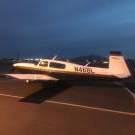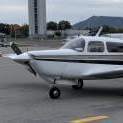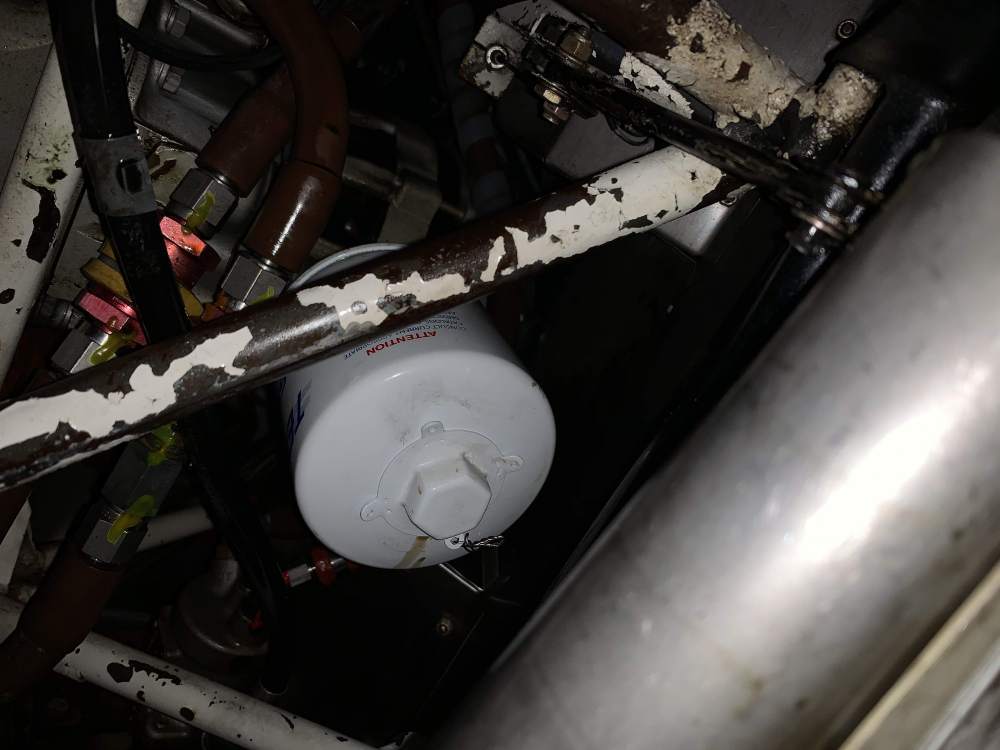
wpbarnar
Supporter-
Posts
127 -
Joined
-
Last visited
Profile Information
-
Gender
Male
-
Location
Northeast Tennessee
Recent Profile Visitors
2,381 profile views
wpbarnar's Achievements
-
We are exploring having an Instrument Procedure developed for the airpark that I live in. Hughes Aerospace is one of the big players for developing Special Instrument Procedures for private airports, airlines, EMS services, etc.... Does anyone know of other companies that can provide a similar service? Google has not been very helpful. Bill
-
It may be obvious to you but it is clear as mud to me.
-
The approach list a DA for the LPV and LNAV/VNAV of 359’ and 378’ respectively. It also includes a MDA for the LNAV/VNAV of 500’ So can I go down to the MDA?
-
What does LPV and LNAV/VNAV LINES OF MINIMA NA mean? This was contained in a NOTAM for the RNAV 32 and 24 at KAAF. I don’t know what “lines of minima” are. Bill
-
@carusoam's request I am sharing a data dump from a Garmin G3X as a example of it ability to capture engine and flight data. The file is in Excel. The file is from a short flight I took yesterday. I departed my local airport, clicked on the A/P and let it navigate to a couple intersections nearby. At 14:19:42, I clicked off the A/P for a little sightseeing and play. At 14:30:27, The A/P went back on to fly a Garmin generated visual approach back to my home base. Bill P.S. yes the pitch, roll, and G data is real during the play mode. Don't freak out this is not a Mooney. log_20210224_L31_exercise.xlsx
-
Have you compared the price of the Garmin engine monitor vs a JPI? There may potential saving as you can incorporate the Garmin engine monitor into the 10” G3X. I only have a single 10” display and my engine monitor is incorporated into it. The “normal” display for engine monitor is a narrow vertical column displaying RPM, MP, OIL PRESS, OIL TEMP, & Fuel. I split the screen to see EGT, CHT, Fuel flow etc for leaning. i am not concerned about lack of redundancy of not having a dedicated engine monitor screen. During practice IFR approaches, I will sometimes cover the G3X and fly the approach with the GTN and G5 only. You don’t need RPM and MP to safely execute an approach. Additionally if you are a data geek, I think a data download from the Garmin engine monitor is way cooler than a JPI. In addition to all the engine data, all the flight information is captured also. IAS,TAS,Alt, Density Alt, pitch angle, roll angle and on and on. The spread sheet contains 102 different columns of data, recorded every second. Bill
-
If you are only going with one G3X screen, the 10” is much more versatile than a single 7” in portrait mode. I frequently use the capability to split the 10” screen into two screens and capitalize on the functionality of the G3X system. The two screens on a split 10” still are large enough to remain useful. Bill
-
I experienced the exact same failure and intermittent contact in my Encore. Bill
-
The Acclaim he is looking out has the opposite. The rear bulkhead or flight time is greater than the engine time on the G1000 by a significant amount. @OneAuburnFan what do the log books say? Airframe and engine time should both be noted. Did the difference slowly evolve over time or something else trigger it. Bill
-
The cross over from the mains into the aux begins at approximately 50% capacity of your main tanks, at least that was the case in my Encore. (37.5 main & 15 aux) If I filled my mains and added nothing to the aux, given time the mains would equalize into the aux and the main tank level would decrease indicating about 18 gallons. The fuel level gauge would remain there until the aux was empty. I suspect there is minor differences from airplane to airplane depending on the installation. You can determine your crossover point by very slowly adding fuel to the main and observing the aux for the first indication of fuel in the bottom inboard side of aux. I emphasized slowly as I could easily fill my mains up with very little going into the aux until they sat for a few minutes. Knowing the actual amount per side was a challenge while flying. If the indicated amount was above 18 gallons, then that wing contained the indicated amount plus some quantity in the aux. When potentially starting out with 52 gallons per wing, only when the indicated amount drops below the cross over point does the fuel gauge actually become representative is the downside of the Monroy system. An accurate fuel totalizer can be very beneficial. Bill
-
I have a adequate amount of time in the high teens or low 20’s. to comment Maintaining warm enough engine temperature was never an issue. Thin air does not transfer heat well. I have cracked the cowl flaps at 18K’ and -10C to maintain temperature. When flying in the low FLs, I was always more concerned about ice in the fuel (and my PO2) than anything else. I can’t imagine the oil in the oil cooler congealing while attached to an operating engine. Bill
-
I chased oil leaks on my TSIO 360 so I can speak from experience. The rocker box covers (all 12 of them) are prone to leak. They are easily distorted if over tightened, especially with silicon gaskets. If they are not dead flat on the mating surface, they never will seal. I replaced 10 of mine to stop the seeps. The push rod tubes also are prone to leaks. They are a pain to replace. If you ever have the exhaust manifold off, take the opportunity of easy access and replace the seals on any suspect tube. I also suspect you have a magneto gasket leaking as the area around oil filter appeared wet from drips above. Bill PS. IMO. The G3X/G500 is hard to beat. I have about 100 hrs with that combo. (Not in a Mooney). The experience is in a much poorer IFR platform airplane . I can only imagine how sweet that combo would be in a K model.
-
This may sound strange, but were your panel lights on when the oil pressure indicated low? If the instrument case ground is poor on the ship’s gauges, panel lights can lower your oil pressure indication. The lighting ground is acting as the instrument ground. They don’t like the shared ground. Turn your panel lights on and adjust the lighting rheostat and observe the pressure indication. If it fluctuates with rheostat movement, the instrument ground is poor. It is easy for me to spend other people’s money, but you really need a engine monitor. I don’t have a lot of confidence in 30 year old ship’s gauges and IMO, K models need a engine monitor to be flown correctly. On a separate note, I would verify the safety wire on your oil filter is pulling in the correct direction. It appears to be threaded through the tab and pulling in a counter clockwise direction. Bill
-
They IRAN’d a MT prop for me. The cost were lower than his estimate and the prop was turned around in the time frame that he quoted. (3 weeks). I Would definitely use Jimmy G again. Bill
-
Please note in Rick’s original post he indicated that the gear relay circuit breaker tripped, not the gear actuator. I think everyone assumed he has a problem with the gear actuator motor, which may not be the case. Bill






